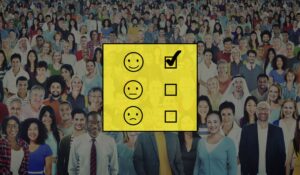Hospitals and other medical centers can be extremely busy places to work. Healthcare professionals must cater to rapidly growing patient rosters while they communicate with one another, satisfy institutional goals, and maintain high levels of patient support and follow-up.
It is a stressful work environment, but employee mobile apps help ease some of that stress.
Why? Because employee mobile apps encourage communication on the fly. They help bring several objectives under one umbrella while encouraging healthcare professionals to use technology to their advantage.
Create Some Comic Relief
Employee mobile apps like HubEngage are not just for instant messaging and calendar syncing. You can use them for that purpose, but they can serve a far more engaging objective.
As mentioned, hospitals and medical centers create stressful environments for employees. While you do not want to distract healthcare workers from their important jobs, you can create some comic relief while still helping staff to learn.
Quizzes, surveys, and stories help lighten the mental load and create emotional connections between employees. They are also mentally challenging, but in a different way than practicing medicine. They stimulate the social centers of the brain and encourage friendly competition among employees.
Gamification might not sound like an activity that belongs in the healthcare workplace, but it is actually beneficial for professionals in the medical field. It prompts them to test their reaction times, their knowledge retention, and their ability to derive conclusions from data.
Build a Team-Oriented Workplace
In no other industry does teamwork matter more than in healthcare. Doctors, nurses, and other medical professionals must work in perfect synchronicity as they form plans of care, diagnose illnesses, refer patients to specialists, and explore treatment options.
Employee mobile apps help increase engagement among colleagues. You can brand your app based on your hospital or medical center logo, colors, and other physical attributes, which can help all staff members feel as though they are playing for the same team.
As colleagues become more team-oriented, they will work together in greater harmony. They can anticipate each other’s actions, respond more quickly when the circumstances justify it, and work more cooperatively to enhance patient care.
Create a Mobile-First Environment
Many healthcare providers have already switched to mobile technology. From electronic health records to iPads in the examination rooms, mobile technology can make any medical facility more efficient.
Employee mobile apps take those benefits to the next level. They encourage healthcare workers to keep their smartphones with them at all times so they can respond when they get an alert or need to address an issue.
A mobile-first environment ensures that your hospital or medical facility is already at the top of its technological game. As more platforms move toward mobile applications and data collection, you will be poised to implement the latest technology as it becomes available.
Permit Real-Time Communications
Traditional phone and email communication are hardly efficient, especially in a healthcare environment.
Suppose a doctor is examining a patient and has a question for his or her nurse. Instead of leaving the examination room, tracking down the nurse, and waiting for an answer, he or she can simply pull up the employee engagement app and shoot off an instant message.
It is far faster and less disruptive.
This is particularly true in larger facilities. If you have ever tried to track down a single person in a large hospital, you know that it is more difficult than finding a needle in the proverbial haystack. Even with sophisticated VoIP phone systems, employee mobile apps make communication more efficient through instant messaging.
Enable Push Notifications
Emergencies happen in any industry, but they are arguably more common in healthcare settings. Regardless of the nature of your practice, you might need to reach other healthcare professionals immediately. Push notifications become not just a convenience, but a potentially life-saving piece of technology.
When you use push notifications, recipients receive an immediate alert. They simply have to look at their smartphones to read the message and react appropriately. In certain situations, that simple communication protocol can become critical to operational success.
You can create your own policies and protocols for using push notifications at your healthcare facility. As long as every medical professional knows how they are used, you can ensure fast, efficient responses to every push notification you send.
Additionally, you can assign roles within the employee mobile app, which allows you to decide who can send push notifications.
Boost Employee Retention
Did you know that, for every increase in nurse turnover for a hospital, the medical facility loses about $300,000? That is a significant cost, especially for facilities that struggle with rate cuts and other cash flow issues.
Employee turnover is not just a hassle or an inconvenience. It is a costly issue that can result in less-desirable workplaces, poor employee communication, and onboarding issues.
We have noticed that, when our clients in healthcare begin using HubEngage’s employee engagement app, turnover rates tend to decline. Why? Because employees feel heard, accepted, and wanted. They know that they can connect with their colleagues and superiors when necessary, and they understand that their employers value their hard work.
We appreciate everything that healthcare providers do for our colleagues, friends, and family members. Medicine can sometimes seem like a thankless job, but when hospitals and medical centers put employees first, the workplace can thrive.
We encourage you to try the HubEngage app today. You will quickly recognize its value in your healthcare organization, and we cannot wait to see what amazing outcomes you will achieve with this technology.














